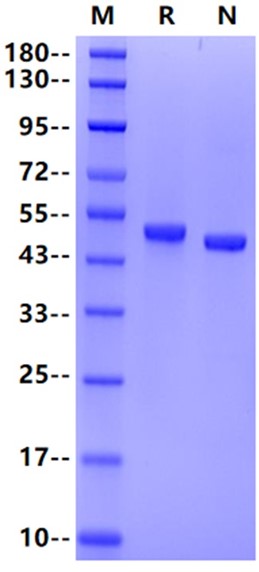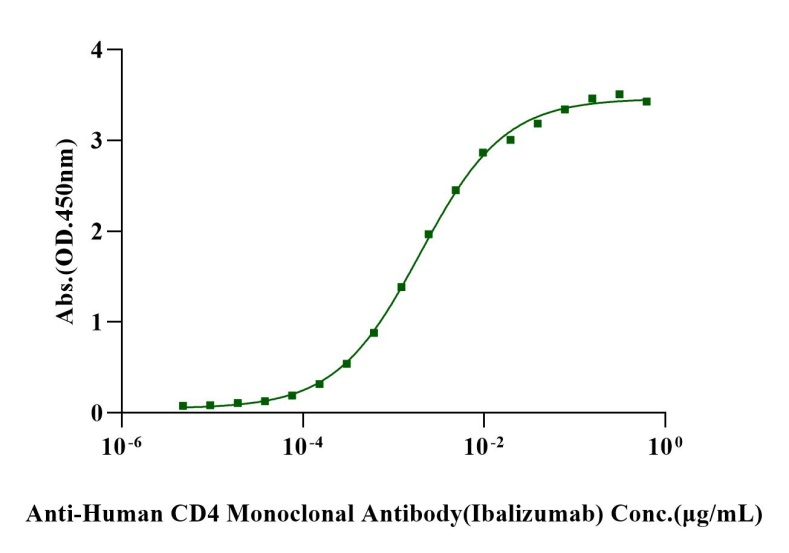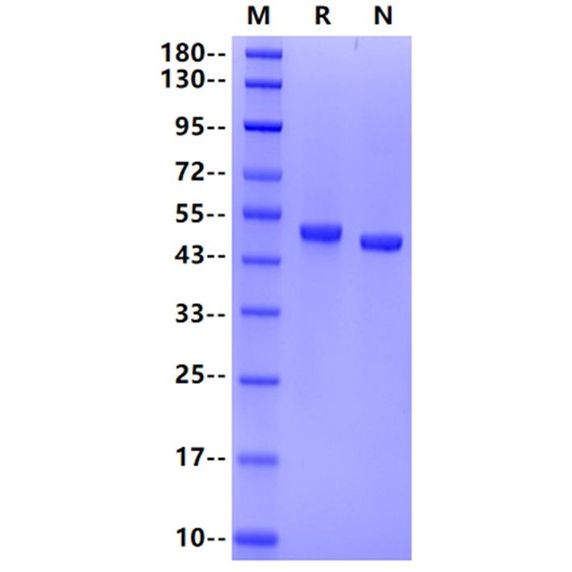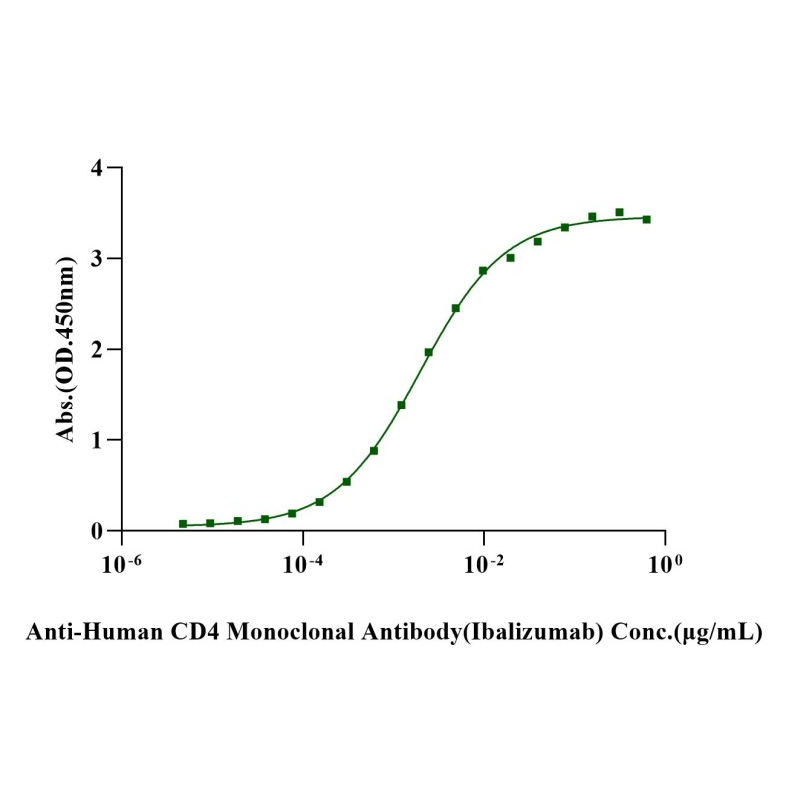Product Details
Product Details
Product Specification
| Species | Human |
| Synonyms | CD4, CD4mut, LEU3 |
| Accession | P01730 |
| Amino Acid Sequence | Lys26-Trp390, with C-terminal 8*His KKVVLGKKGDTVELTCTASQKKSIQFHWKNSNQIKILGNQGSFLTKGPSKLNDRADSRRSLWDQGNFPLIIKNLKIEDSDTYICEVEDQKEEVQLLVFGLTANSDTHLLQGQSLTLTLESPPGSSPSVQCRSPRGKNIQGGKTLSVSQLELQDSGTWTCTVLQNQKKVEFKIDIVVLAFQKASSIVYKKEGEQVEFSFPLAFTVEKLTGSGELWWQAERASSSKSWITFDLKNKEVSVKRVTQDPKLQMGKKLPLHLTLPQALPQYAGSGNLTLALEAKTGKLHQEVNLVVMRATQLQKNLTCEVWGPTSPKLMLSLKLENKEAKVSKREKAVWVLNPEAGMWQCLLSDSGQVLLESNIKVLPTWGGGSHHHHHHHH |
| Expression System | HEK293 |
| Molecular Weight | 45-50kDa |
| Purity | >95% by SDS-PAGE |
| Endotoxin | <0.1EU/μg |
| Conjugation | Unconjugated |
| Tag | His Tag |
| Physical Appearance | Lyophilized Powder |
| Storage Buffer | PBS, pH7.4 |
| Reconstitution | Reconstitute at 0.1-1 mg/ml according to the size in ultrapure water after rapid centrifugation. |
| Stability & Storage | · 12 months from date of receipt, lyophilized powder stored at -20 to -80℃. · 3 months, -20 to -80℃ under sterile conditions after reconstitution. · 1 week, 2 to 8℃ under sterile conditions after reconstitution. · Please avoid repeated freeze-thaw cycles. |
| Reference |
1、Farrar W L. et al. (1988) Characterization of CD4 glycoprotein determinant-HIV envelope protein interactions: perspectives for analog and vaccine development. Crit Rev Immunol. 8(4): 315-339. 2、Biddison W E. et al. (1989) CD4 expression and function in HLA class II-specific T cells. Immunol Rev. 109: 5-15. 3、Singh S K. et al. (2012) Mapping the interaction between the cytoplasmic domains of HIV-1 viral protein U and human CD4 with NMR spectroscopy. FEBS J. 279(19): 3705-3714. |
Background
T-cell surface glycoprotein CD4 is also known as T-cell surface antigen T4/Leu-3 that plays an essential role in the immune response and serves multiple functions in responses against both external and internal offenses. In T-cells, functions primarily as a coreceptor for MHC class II molecule: peptide complex. The antigens presented by class II peptides are derived from extracellular proteins while class I peptides are derived from cytosolic proteins. Interacts simultaneously with the T-cell receptor (TCR) and the MHC class II presented by antigen presenting cells (APCs).CD4 is accessory protein for MHC class-II antigen/T-cell receptor interaction. CD4 induces the aggregation of lipid rafts. CD4 is a primary receptor used by HIV-1 to gain entry into host T cells. HIV infection leads to a progressive reduction of the number of T cells possessing CD4 receptors.
Picture
Picture
SDS-PAGE

ELISA

Immobilized CD4/LEU3 His Tag, Human (Cat. No. UA010353) at 2.0μg/mL (100μL/well) can bind Anti-Human CD4 Monoclonal Antibody (Ibalizumab) with EC50 of 1.80-2.15ng/mL.




